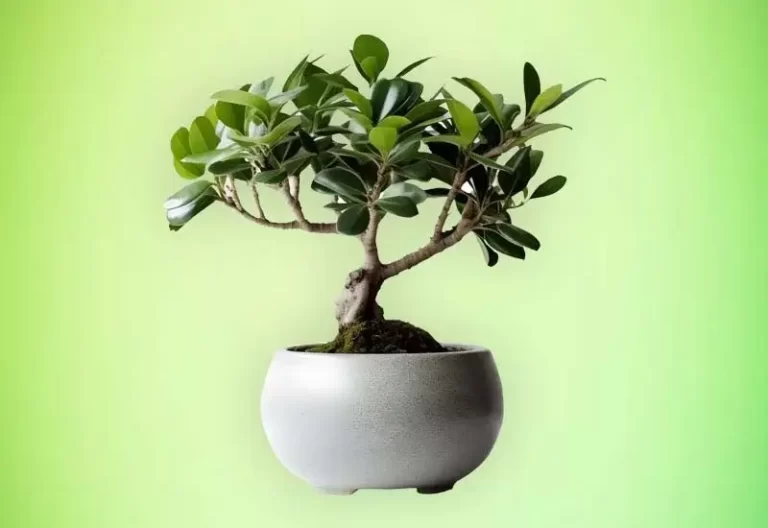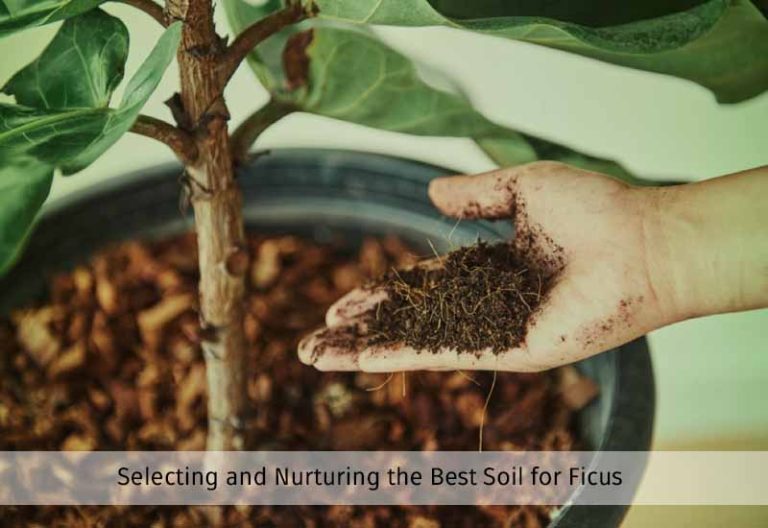15 Types of Ficus Indoor Plant growth and Care
Indoor gardening enthusiasts often seek to bring a touch of nature into homes and workplaces, and Ficus indoor plants are ideal choices for this purpose. With their striking foliage and adaptability to various indoor environments, Ficus indoor plants have become favorites among seasoned gardeners and those new to indoor greenery.
This guide will delve into the world of Ficus indoor plants, offering insights into their characteristics, care requirements, and how to choose the perfect Ficus companion for your indoor oasis.
Types of Ficus Indoor Plant
Ficus Maclellandii (Alii Ficus)
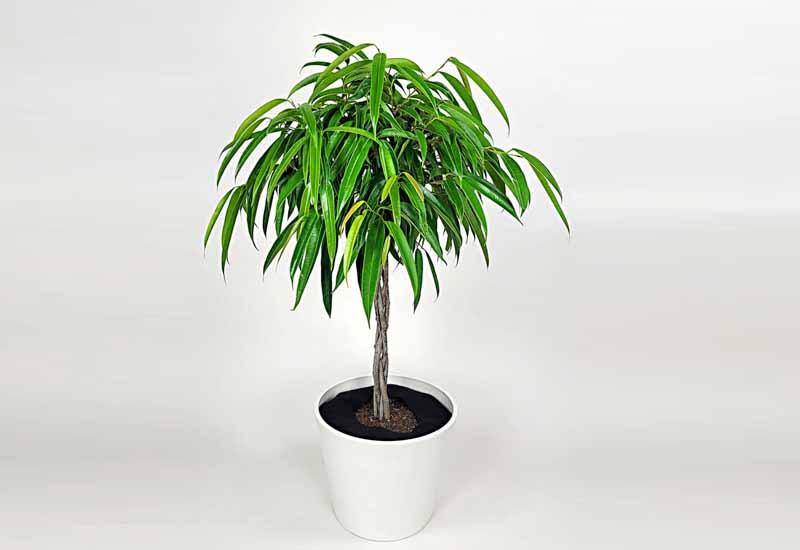
The Alii Ficus, known for its graceful appearance, boasts long, narrow leaves that cascade elegantly, creating a striking curtain of green. Its upright growth habit sets it apart from other Ficus varieties, making it an excellent choice for those seeking an indoor tree-like presence.
Care Tips:
Light: Thrives in bright, indirect light but can adapt to lower light conditions.
Watering: Allow the top inch of soil to dry out between waterings.
Soil: A well-draining potting mix soil is ideal.
Temperature: Enjoys moderate room temperatures.
Ficus Triangularis (Triangle Ficus)
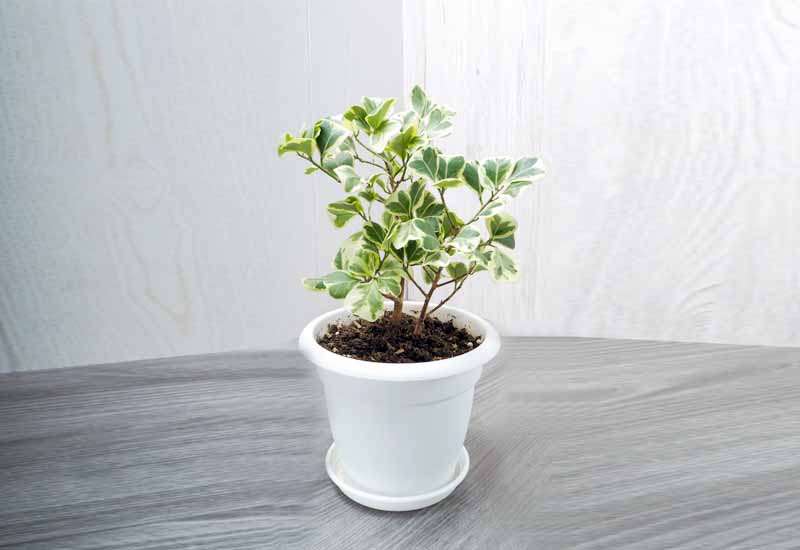
The Triangle Ficus earns its name from its unique triangular-shaped leaves. These leaves, with their striking dark green hue and prominent veins, add a touch of sophistication to any indoor space. This Ficus variety is relatively compact, making it suitable for smaller rooms.
Care Tips:
Light: Prefers bright, indirect light but can tolerate moderate light conditions.
Watering: Keep the soil consistently moist but not waterlogged.
Soil: Well-draining potting mix with good aeration.
Temperature: Thrives in average indoor temperatures.
Ficus Congesta (Clustering Ficus)

The Clustering Ficus lives up to its name by forming dense clusters of slender leaves, creating a lush and bushy appearance. Its compact growth habit makes it an excellent choice for tabletops, shelves, or as a delightful accent plant.
Care Tips:
Light: Flourishes in bright, indirect light but adapts to lower light conditions.
Watering: Keep the soil evenly moist and ensure proper drainage.
Soil: Well-draining potting mix with added organic matter.
Temperature: Enjoys a stable indoor environment.
Ficus Deltoidea (Mistletoe Fig)

The Mistletoe Fig is named for its unique, spoon-shaped leaves that resemble mistletoe. Its compact growth habit and attractive, glossy foliage make it a charming addition to any indoor setting. It’s a small tree with immense visual appeal.
Care Tips:
Light: Thrives in bright, indirect light but can adapt to lower light conditions.
Watering: Allow the top inch of soil to dry out between waterings.
Soil: Well-draining potting mix with added organic matter.
Temperature: Prefers warm indoor temperatures.
Ficus Binnendijkii (Banana-Leaf Ficus)

The Banana-Leaf Ficus is renowned for its large, banana-shaped leaves that exude tropical charm. Its tall, slender stems and lush foliage make it a favourite among those seeking a touch of the exotic in their indoor spaces.
Care Tips:
Light: Flourishes in bright, indirect light but can tolerate moderate light conditions.
Watering: Keep the soil consistently moist but not waterlogged.
Soil: Well-draining potting mix with good aeration.
Temperature: Enjoys a stable indoor environment.
Ficus Umbellata (Narrow-Leaved Fig)
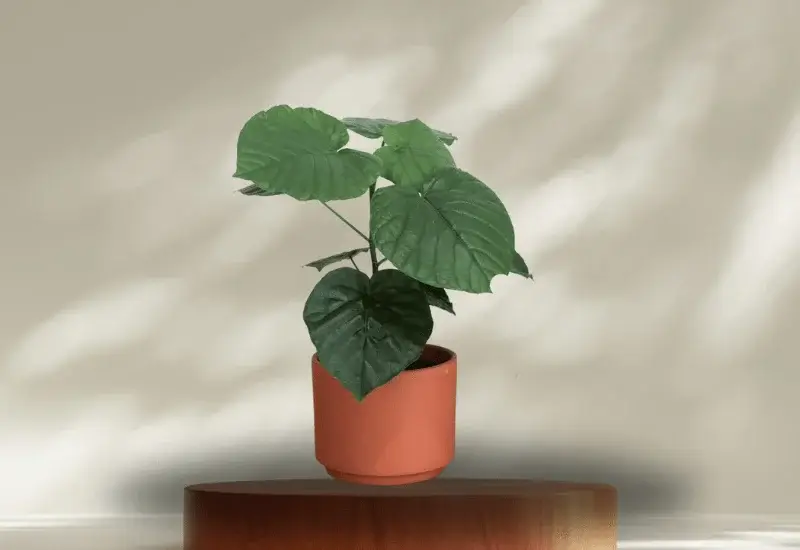
The Narrow-Leaved Fig stands out with its slender, lance-shaped leaves that create a graceful and delicate appearance. This Ficus variety is perfect for those looking to add a touch of elegance to their indoor garden.
Care Tips:
Light: Prefers bright, indirect light but can adapt to lower light conditions.
Watering: Keep the soil evenly moist, ensuring proper drainage.
Soil: Well-draining potting mix enriched with organic matter.
Temperature: Flourishes in average indoor temperatures.
Ficus Benjamina (Weeping Fig)

The Weeping Fig is distinguished by its gracefully arching branches and small, glossy green leaves. Its elegant appearance and air-purifying qualities make it a favourite indoor space choice.
Care Tips:
Light: Flourishes in bright, indirect light but adapts to lower light conditions.
Watering: Allow the top inch of soil to dry out between waterings.
Soil: A well-draining potting mix is ideal.
Temperature: Enjoys moderate room temperatures.
Ficus Lyrata (Fiddle Leaf Fig)

The Fiddle Leaf Fig has gained fame for its large, violin-shaped leaves that create a bold and dramatic statement. Its majestic appearance and air-purifying capabilities make it a prized addition to interiors.
Care Tips:
Light: Prefers bright, indirect light but can tolerate moderate light conditions.
Watering: Keep the soil consistently moist but not waterlogged.
Soil: Well-draining potting mix with good aeration.
Temperature: Flourishes in a stable indoor environment.
Ficus Elastica (Rubber Plant)
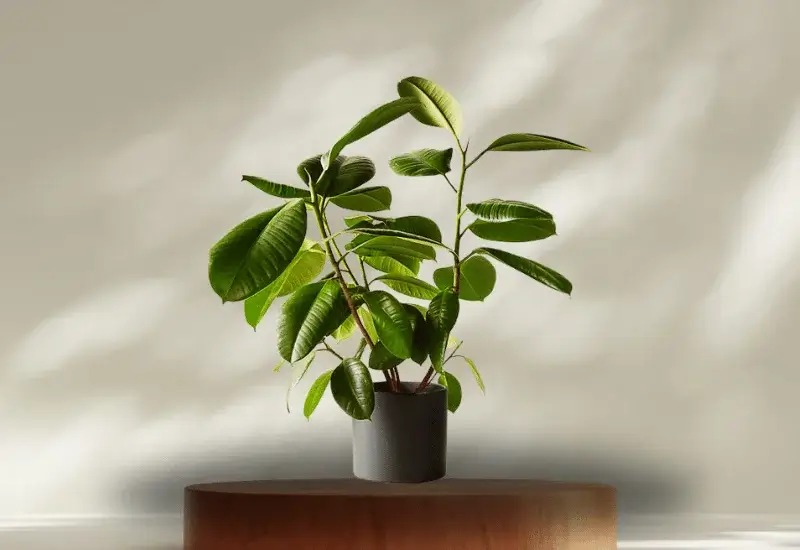
The Rubber Plant is known for its sturdy, glossy leaves and upright growth habit. Its resilience and adaptability have made it a beloved choice for novice and experienced indoor gardeners.
Care Tips:
Light: Thrives in bright, indirect light but can tolerate lower light levels.
Watering: Allow the soil to dry out between waterings partially.
Soil: Well-draining potting mix enriched with organic matter.
Temperature: Prefers consistent indoor temperatures.
Ficus Microcarpa (Indian Laurel)

Indian Laurel embodies a sense of timeless elegance with its dense, dark green leaves and strong upright growth. It’s often chosen for its ability to create a sense of privacy and a serene atmosphere in indoor settings.
Care Tips:
Light: Flourishes in bright, indirect light but adapts to lower light conditions.
Watering: Allow the top inch of soil to dry out between waterings.
Soil: A well-draining potting mix is preferred.
Temperature: Thrives in moderate room temperatures.
Ficus Altissima (Council Tree)
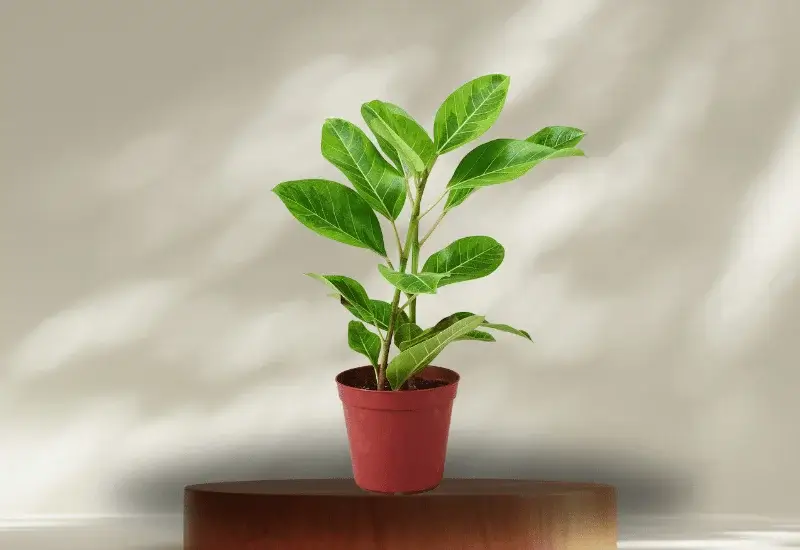
The Council Tree is known for its tall, columnar shape and striking variegated leaves with bold yellow and green patterns. It adds a touch of sophistication and drama to indoor spaces.
Care Tips:
Light: Prefers bright, indirect light but can tolerate moderate light conditions.
Watering: Keep the soil consistently moist but not waterlogged.
Soil: Well-draining potting mix with good aeration.
Temperature: Flourishes in a stable indoor environment.
Ficus Pumila (Creeping Fig)

Creeping Fig is beloved for its small, heart-shaped leaves and trailing growth habit. It’s a versatile choice for those seeking a cascading or climbing plant that adds a charming touch to their interiors.
Care Tips:
Light: Flourishes in bright, indirect light but adapts to lower light levels.
Watering: Keep the soil evenly moist, ensuring proper drainage.
Soil: Well-draining potting mix enriched with organic matter.
Temperature: Prefers consistent indoor temperatures.
Ficus Benghalensis (Banyan Tree)

The Banyan Tree is renowned for its grandeur, with aerial roots that create an enchanting, forest-like atmosphere. Its unique appearance and symbolic significance make it a captivating choice for indoor gardeners.
Care Tips:
Light: Thrives in bright, indirect light but can adapt to lower light conditions.
Watering: Allow the soil to dry out between waterings partially.
Soil: Well-draining potting mix with added organic matter.
Temperature: Prefers a stable indoor environment.
Ficus Retusa (Ginseng Ficus)
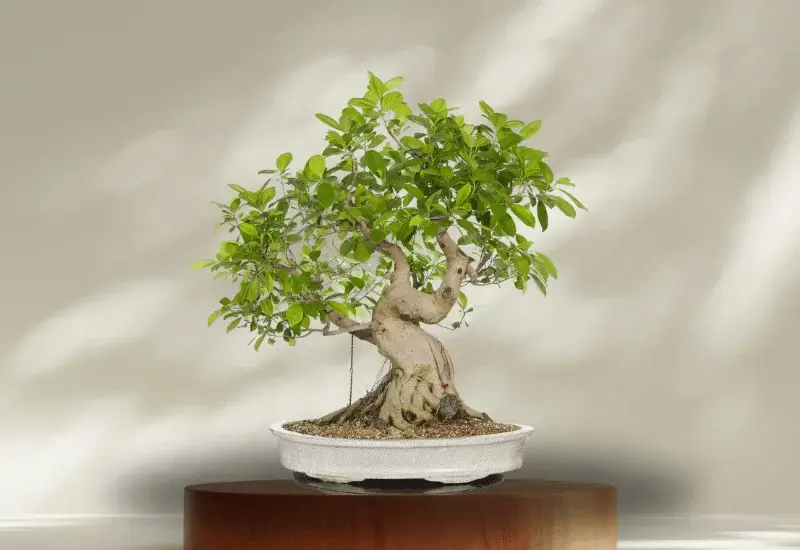
Ginseng Ficus is instantly recognizable for its bulbous, gnarled roots that resemble the ginseng herb, giving it its name. Its glossy, dark green leaves and bonsai-like appearance make it a captivating choice for indoor gardeners.
Care Tips:
Light: Flourishes in bright, indirect light but adapts to lower light conditions.
Watering: Allow the top inch of soil to dry out between waterings.
Soil: A well-draining potting mix is preferred.
Temperature: Thrives in moderate room temperatures.
Ficus Natalensis (Natal Fig)
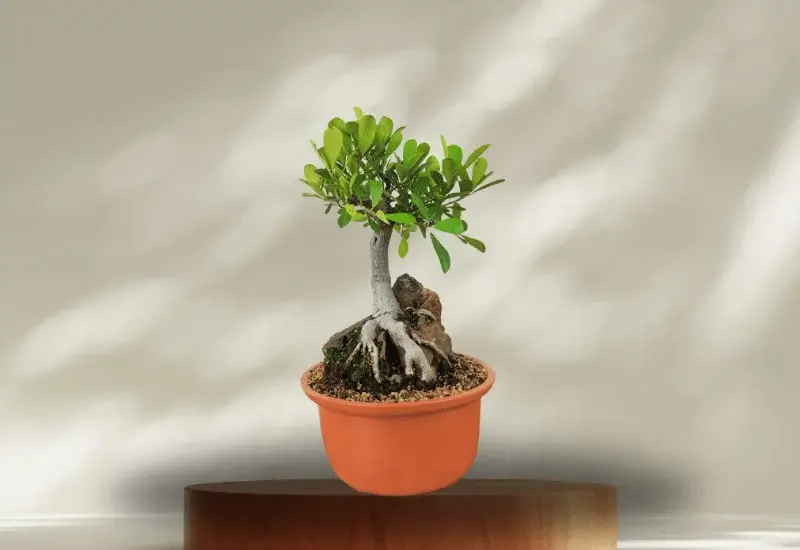
Natal Fig is celebrated for its delicate, deeply lobed leaves that create an intricate and textured look. Its graceful growth habit and resilience make it a favored choice for those looking to add a touch of sophistication to their indoor gardens.
Care Tips:
Light: Prefers bright, indirect light but can adapt to lower light conditions.
Watering: Keep the soil consistently moist but not waterlogged.
Soil: Well-draining potting mix with good aeration.
Temperature: Flourishes in a stable indoor environment.
Benefits of Ficus in Indoor Spaces
Ficus plant offer numerous benefits when incorporated into indoor spaces:
Air Purification: Ficus plants, like Ficus Benjamina and Ficus Elastica, are excellent air purifiers. They help remove common indoor pollutants, such as formaldehyde and benzene, promoting cleaner and healthier indoor air.
Aesthetics: Ficus species like Ficus Lyrata (Fiddle Leaf Fig) and Ficus Retusa (Ginseng Ficus) are renowned for their striking foliage, adding a touch of natural elegance and visual appeal to your interior décor.
Space Division: Taller Ficus varieties, such as Ficus Microcarpa (Indian Laurel), can create natural room dividers, enhancing the layout and aesthetics of your living or working space.
Stress Reduction: The presence of greenery, like Ficus plants, has been shown to reduce stress levels and improve overall well-being, making them ideal companions for indoor environments.
Easy Maintenance: Many Ficus species are relatively low-maintenance, making them suitable for busy individuals or those new to indoor gardening.
Common Issues and Solutions
While Ficus plants offer numerous benefits, they can encounter common issues. Here are some solutions to these problems:
Leaf Drop: Ficus plants may drop leaves due to stress, such as changes in light or watering. Maintain consistent care routines, avoid sudden changes in conditions, and be patient, as Ficus can acclimate slowly.
Yellowing Leaves: Yellow leaves can result from overwatering or underwatering. Adjust your watering frequency, ensuring the soil is both dry and waterlogged.
Pests: Common pests like mealybugs and spider mites can infest Ficus plants. Regularly inspect your plants; treat them with natural remedies or insecticidal soap if you spot pests.
Root Rot: Overwatering and poor drainage can lead to root rot. Ensure proper soil drainage, allow the topsoil to dry slightly between waterings, and consider repotting if needed.
Methods for Multiplying Ficus Plants
There are several methods for propagating Ficus plants:
Cuttings: Propagate Ficus plants from stem cuttings. Take a 6-inch cutting with a node, let it callus, and plant it in a well-draining potting mix.
Air Layering: Encourage roots to form on a healthy branch by removing a section of bark and wrapping it with moist sphagnum moss and plastic wrap until roots develop.
Seed Propagation: While less common, you can propagate some Ficus species from seeds. However, this method can be challenging and time-consuming.
Propagation allows you to create new Ficus plants, expand your indoor garden, or share the beauty of these plants with others. Each method has its requirements and success rates, so choose the best suits your needs and expertise.
General Care Tips for All Ficus Varieties:
Pruning: Regularly prune to maintain shape and encourage healthy growth.
Fertilization: Fertilize during the growing season (spring and summer) with a balanced, water-soluble fertilizer.
Humidity: Provide adequate humidity by misting the plants or using a humidity tray.
Final Words
Lastly, consider expanding your indoor garden by multiplying your Ficus plants through cuttings, air layering, or seed propagation. This allows you to share the joy of indoor gardening with others and continue to enjoy these remarkable plants’ many advantages to your indoor sanctuary.
FAQs About Ficus Plants
1. How often should I water my Ficus plant?
Watering frequency depends on the Ficus species and environmental conditions. Generally, allow the top inch of soil to dry out before watering, and ensure proper drainage to prevent overwatering.
2. What kind of light do Ficus plants need?
Ficus plants typically thrive in bright, indirect light. However, some species can adapt to lower light conditions. Avoid direct sunlight, as it can scorch their leaves.
3. How do I prevent leaf drop in my Ficus plant?
Leaf drops can occur due to stress or changes in care routines. Maintain consistent watering and light conditions, avoid sudden changes, and be patient as Ficus plants acclimate.
4. What is the best potting mix for Ficus plants?
Use a well-draining potting mix with good aeration. A mix of potting soil, perlite, and organic matter works well for most Ficus species.
5. How can I propagate my Ficus plant?
You can propagate Ficus plants through stem cuttings, air layering, or, in some cases, seeds. Choose the method that suits your preferences and experience level.
6. Are Ficus plants safe for pets?
Some Ficus species can be toxic to pets if ingested. It’s advisable to keep Ficus plants out of reach of curious pets or choose non-toxic plant varieties if you have animals at home.
7. Why are my Ficus plant’s leaves turning yellow?
Yellowing leaves can result from overwatering or underwatering. Adjust your watering routine, and ensure the soil is moist and not waterlogged.
8. How can I control pests on my Ficus plant?
Common pests like mealybugs and spider mites can be managed with natural remedies like neem oil or insecticidal soap. Regularly inspect your plants and treat any infestations promptly.
9. Can I place my Ficus plant outdoors during the summer?
Ficus plants can benefit from outdoor exposure during the summer, but ensure they are gradually acclimated to outdoor conditions and protected from direct sunlight and extreme temperatures.
10. What is the ideal temperature for Ficus plants?
Ficus plants generally prefer stable indoor temperatures between 60-75°F (15-24°C). Avoid exposing them to cold drafts or sudden temperature fluctuations.
These FAQs should provide valuable insights into caring for your Ficus plants and addressing common concerns that may arise during your indoor gardening journey.


